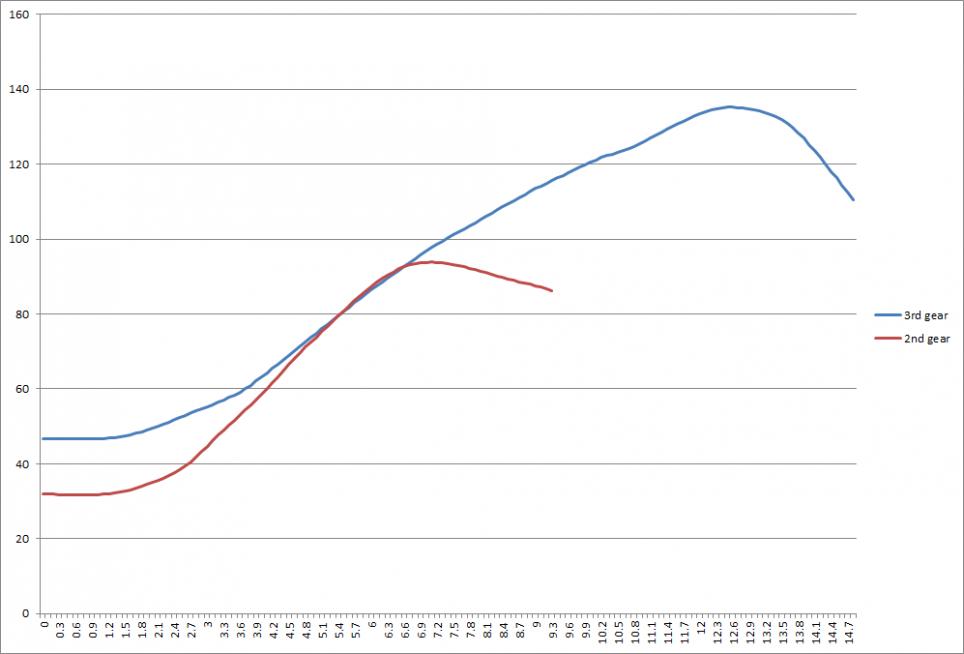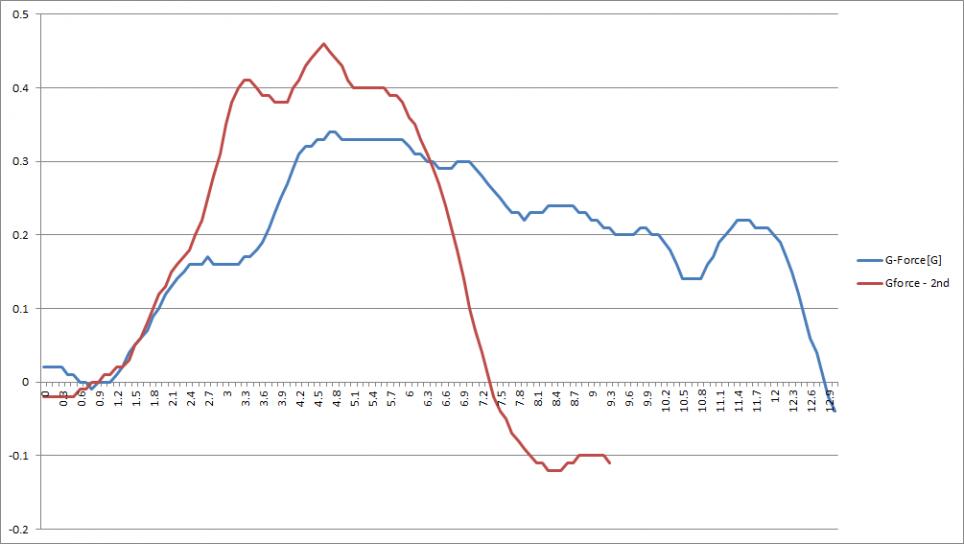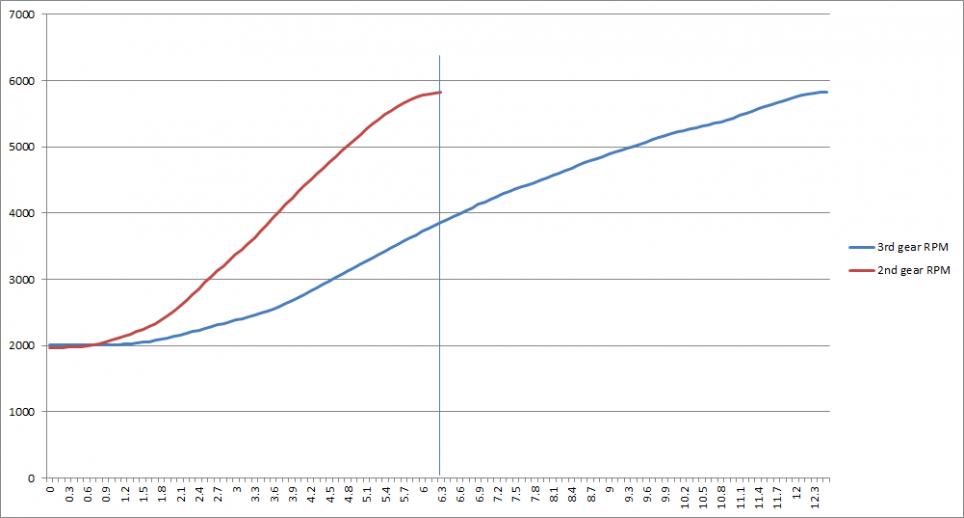On reading an article from Autospeed website (Autospeed - Finding the best gear shift points) I decided to try this on my car to find optimal shift points for maximum performance. That is, at what revs should I be changing at to get maximum acceleration? This is relevant for track days and drag racing, or the odd traffic light GP. Whilst I did this using a Gtech GPS lap timer, it’s absolutely possible to do with any smartphone with an accelerometer. You could try use your phone GPS, but I don’t think it’ll be sufficiently accurate to due to the refresh rate of a phone, and the IPhone accelerometers have been reported as being sufficiently accurate.
So far I’ve only done the second to third gear shift, I can/will easily overlay 4th when I have a sufficiently safe environment to stretch out 4th gear.
Anyway, enough waffle on how, the results. The short of it, for optimum shifts I should be shifting at 5800 rpm for 2nd to 3rd. Anything beyond that is wasted energy. I have the raw data, though yet to validate all this. It’s also not relevant for a 0-100km/h run. Not sure if the polo’s gearing would allow 2nd to stretch to 100km/h, though you’d be nudging or over 7000rpm I reckon (I have no interest in trying this).
The horizontal axis is in seconds as it’s the common point of reference. Km/h could be used if doing it from a phone as per Autospeed. As the gtech record at 10hz (10x second), it’s the easiest for my data collation. 5800rpm in second is ~90km/h, 90km/h in 3rd is about 3900rpm (as per 3rd picture below).

From this graph, you can also see my acceleration times, e.g 3rd gear 80-120km/h in 4.5seconds.

If you use your phone accelerometer, ensure its reading zero g’s before you start, more details in the Autospeed link. It will look something like this.

This also backs up my thoughts/feel for the car. On track days I very rarely rev beyond 6000rpm. Given the torque of these cars, short shifting at revs beyond 4500rpm (4.2seconds on x-axis) in 2nd also lands in the power band for 3rd gear.
For me, knowing this means I can shift at the most appropriate point, rather than revving it harder, which wastes time, generates much greater heat and added stress on engine and associated bits (thinking drive train and everything that runs off the timing belt, so alternator and air con bearings at a guess).
So far I’ve only done the second to third gear shift, I can/will easily overlay 4th when I have a sufficiently safe environment to stretch out 4th gear.
Anyway, enough waffle on how, the results. The short of it, for optimum shifts I should be shifting at 5800 rpm for 2nd to 3rd. Anything beyond that is wasted energy. I have the raw data, though yet to validate all this. It’s also not relevant for a 0-100km/h run. Not sure if the polo’s gearing would allow 2nd to stretch to 100km/h, though you’d be nudging or over 7000rpm I reckon (I have no interest in trying this).
The horizontal axis is in seconds as it’s the common point of reference. Km/h could be used if doing it from a phone as per Autospeed. As the gtech record at 10hz (10x second), it’s the easiest for my data collation. 5800rpm in second is ~90km/h, 90km/h in 3rd is about 3900rpm (as per 3rd picture below).

From this graph, you can also see my acceleration times, e.g 3rd gear 80-120km/h in 4.5seconds.

If you use your phone accelerometer, ensure its reading zero g’s before you start, more details in the Autospeed link. It will look something like this.

This also backs up my thoughts/feel for the car. On track days I very rarely rev beyond 6000rpm. Given the torque of these cars, short shifting at revs beyond 4500rpm (4.2seconds on x-axis) in 2nd also lands in the power band for 3rd gear.
For me, knowing this means I can shift at the most appropriate point, rather than revving it harder, which wastes time, generates much greater heat and added stress on engine and associated bits (thinking drive train and everything that runs off the timing belt, so alternator and air con bearings at a guess).



 My trap speed on that run was 160.98kph.
My trap speed on that run was 160.98kph. 


 There has to be a few 10ths in that I would think.
There has to be a few 10ths in that I would think.


Comment